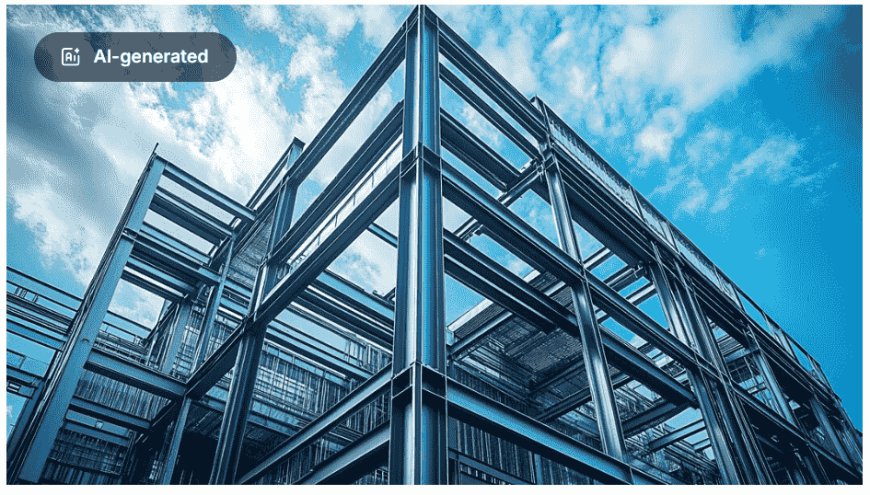The Appeal of Metal Buildings: Insights into Hybrid Steel Buildings and Steel Building Prices
Metal buildings have become increasingly popular due to their durability, efficiency, and adaptability. These structures,

Metal buildings have become a prominent choice in construction due to their durability, cost-effectiveness, and adaptability. From warehouses and industrial facilities to residential homes, these structures offer numerous benefits. Among the various types of metal buildings, hybrid steel buildings represent an innovative approach that combines the strength of steel with other materials. Understanding these options and the factors that influence steel building prices is essential for making informed decisions.
Benefits of Metal Buildings
Metal buildings are renowned for their robustness and longevity. Constructed from high-quality steel, these buildings can withstand extreme weather conditions, resist pests, and endure fires. This durability minimizes the need for frequent repairs and reduces long-term maintenance costs, making metal buildings a wise investment for any construction project.
One of the key advantages of metal buildings is their versatility. They can be tailored to meet various needs, from commercial and industrial purposes to residential uses. The design flexibility of metal buildings allows for expansive open spaces, adaptable layouts, and customization options, such as mezzanines and specialized areas. This adaptability makes them suitable for diverse applications, including warehouses, retail stores, and even homes.
Moreover, metal buildings are environmentally friendly. Steel is a highly recyclable material, and many manufacturers use recycled steel in their construction. This practice not only reduces the environmental footprint but also supports sustainable building practices. Additionally, the energy efficiency of metal buildings can be enhanced with proper insulation and design, contributing to lower energy consumption and operating costs.
Exploring Hybrid Steel Buildings
Hybrid steel buildings are an advanced construction solution that combines the benefits of traditional steel structures with other materials like wood or concrete. This integration allows for enhanced design flexibility and performance characteristics, setting hybrid steel buildings apart from conventional metal buildings.
One notable advantage of hybrid steel buildings is their architectural versatility. By incorporating different materials, designers can achieve unique aesthetic effects and more complex structures. This flexibility is particularly valuable for projects that require distinctive architectural elements or customized features.
In addition to aesthetic benefits, hybrid steel buildings offer improved energy efficiency. The combination of steel with other materials, such as insulated concrete or wood panels, can enhance the building's thermal performance. This leads to better insulation, reduced energy consumption, and lower utility costs. This efficiency is especially beneficial in regions with extreme temperatures, where maintaining a comfortable indoor climate is crucial.
Another benefit of hybrid steel buildings is the potential for faster construction times. The use of prefabricated steel components combined with other materials can streamline the building process, allowing for quicker project completion. This efficiency, combined with the durability of steel, makes hybrid steel buildings a practical choice for projects with tight deadlines.
Factors Affecting Steel Building Prices
Several factors influence steel building prices, and understanding these can help you manage your budget effectively.
-
Material Costs: The price of steel is a significant determinant of steel building prices. Fluctuations in the steel market can impact costs, so staying informed about market trends is essential. Despite potential price changes, steel remains a cost-effective choice due to its strength and low maintenance needs.
-
Building Size and Design: The size and complexity of the building play a crucial role in determining steel building prices. Larger structures require more materials and labor, resulting in higher costs. Additionally, complex designs or custom features can further increase the overall price.
-
Customization Options: Adding custom features such as specialized doors, windows, insulation, and interior finishes can affect steel building prices. While these additions enhance functionality and aesthetics, they also contribute to the overall cost. Balancing customization with budget considerations is key to achieving your desired outcome.
-
Location and Labor Costs: The location of the construction site influences steel building prices due to variations in local labor rates, transportation costs, and building codes. It's important to account for these factors when planning your project to ensure accurate budgeting.
Conclusion
Metal buildings offer a durable, versatile, and environmentally friendly solution for various construction needs. The innovation of hybrid steel buildings provides additional benefits by combining steel with other materials for enhanced performance and aesthetics. Understanding the factors that affect steel building prices helps in making informed decisions and managing project budgets effectively. Whether you're considering a metal building for industrial, commercial, or residential use, or exploring the advantages of hybrid steel buildings, these structures offer a range of benefits that make them a valuable choice in modern construction.
